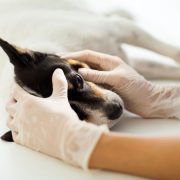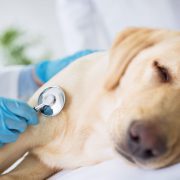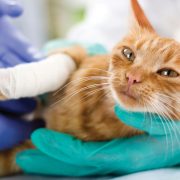High prevalence of SARS-CoV-2 antibodies in pets from COVID-19+ households
High prevalence of SARS-CoV-2 antibodies in pets from COVID-19+ households
Added 25 November 2020
Fritz, M. et al. (2020) High prevalence of SARS-CoV-2 antibodies in pets from COVID-19+ households. One Health, p. 100192. https://doi.org/10.1016/j.onehlt.2020.100192
This paper present results from a serological survey of pets conducted between May and June 2020 in two neighbouring regions of eastern France (Franche-Comté and Rhone-Alpes). Both regions were reported to have similar epidemiological characteristics and health management policies, with the first hospitalised deaths registered in March 2020.
The first group of pets, from the Franche-Comté region, were living in homes where at least one person tested positive for SARS-CoV-2 (COVID-19+ household group). The second group, from the Rhone-Alpes, were pets from households where exposure was unknown (unknown status household group). Lastly, they included a control group of animals sampled in 2018 and early 2019 before the outbreak, including hyperimmune sera from ten cats with feline infectious peritonitis virus (FIPV), (Control group). FIPV-infected cat sera were included in the control group to exclude possible cross-reactivity of antibodies generated in response to non-SARS-CoV-2 coronaviruses.
The researchers combined four different tests based on two different techniques to ensure the greatest degree of specific-antibody detection. Three microsphere immunoassays (MIA) detected anti-SARS-CoV-2 IgGs produced in response to viral N, S1, or S2 proteins, and a retrovirus-based pseudo-particle assay detected SARS-CoV-2 neutralizing antibodies. Animals were declared COVID-19 positive following a positive sero-neutralization assay or if they were positive for all three MIA tests.
21.3% (10 of 47 animals tested) of pets in COVID-19+ households tested positive, including 23.5% of cats (8/34) and 15.4% of dogs (2/13). Out of the 16 cats and 22 dogs tested from households of unknown status, only one animal (a cat) tested positive and none of the animals in the control group tested positive.
However, if only one test was required to be positive 53.2% in pets from COVID-19+ households showed signs of having been infected (58.8% of cats (20/34) and 38.5% of dogs (5/13)) compared to 15.8% (6/38) of pets in homes of unknown status.
The authors conclude that, based on the highly variable antibody responses to SARS-CoV-2 reported in human infections, and a recent Swiss study that found that anti-N antibody assays substantially underestimate the proportion of SARS-CoV-2 exposed individuals compared to anti-S antibody assays in population-based seroprevalence studies, the actual seropositivity in COVID-19+ households is likely closer to 53% than 21%, indicating that infection risk in the pets of COVID-19 positive owners is much higher than previously described.
This study shows that it is important to be aware of exactly what testing criteria have been used when interpreting results and comparing results from different studies.






Leave a Reply
Want to join the discussion?Feel free to contribute!